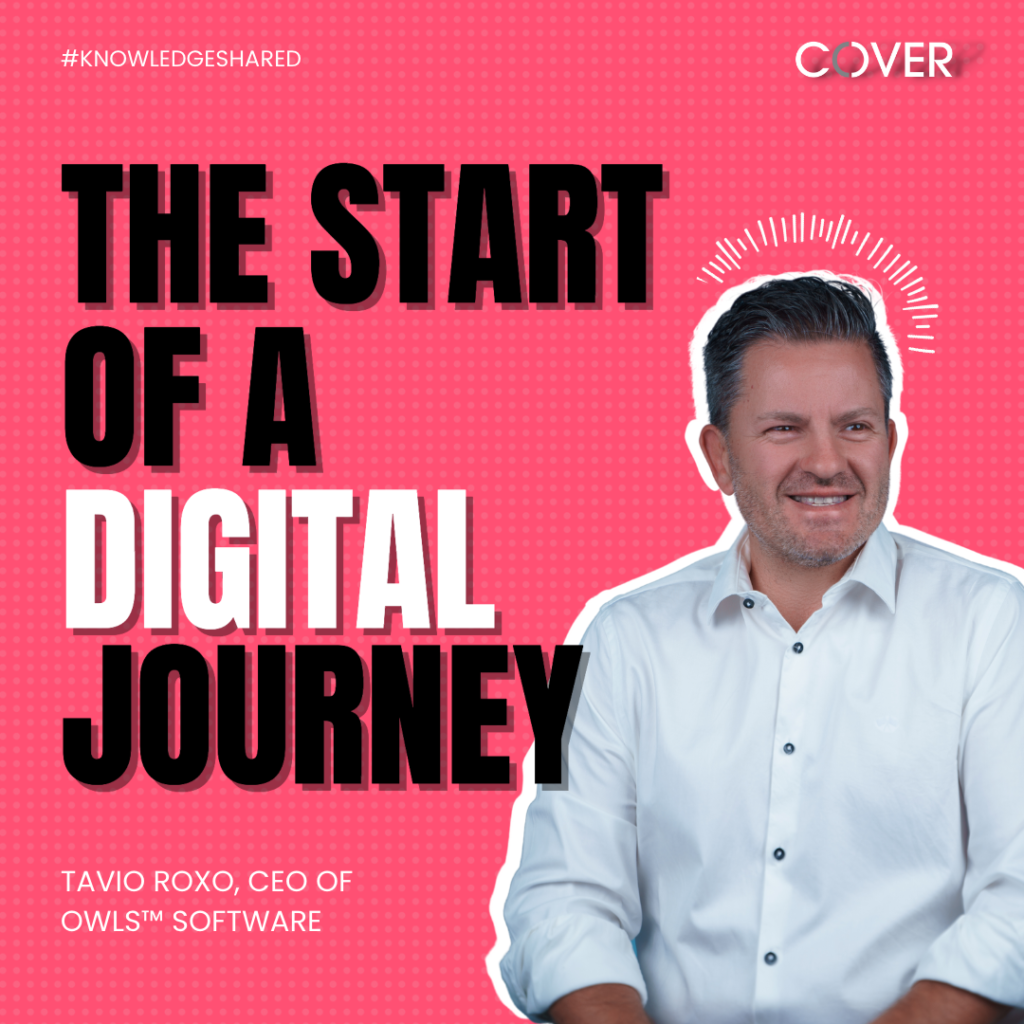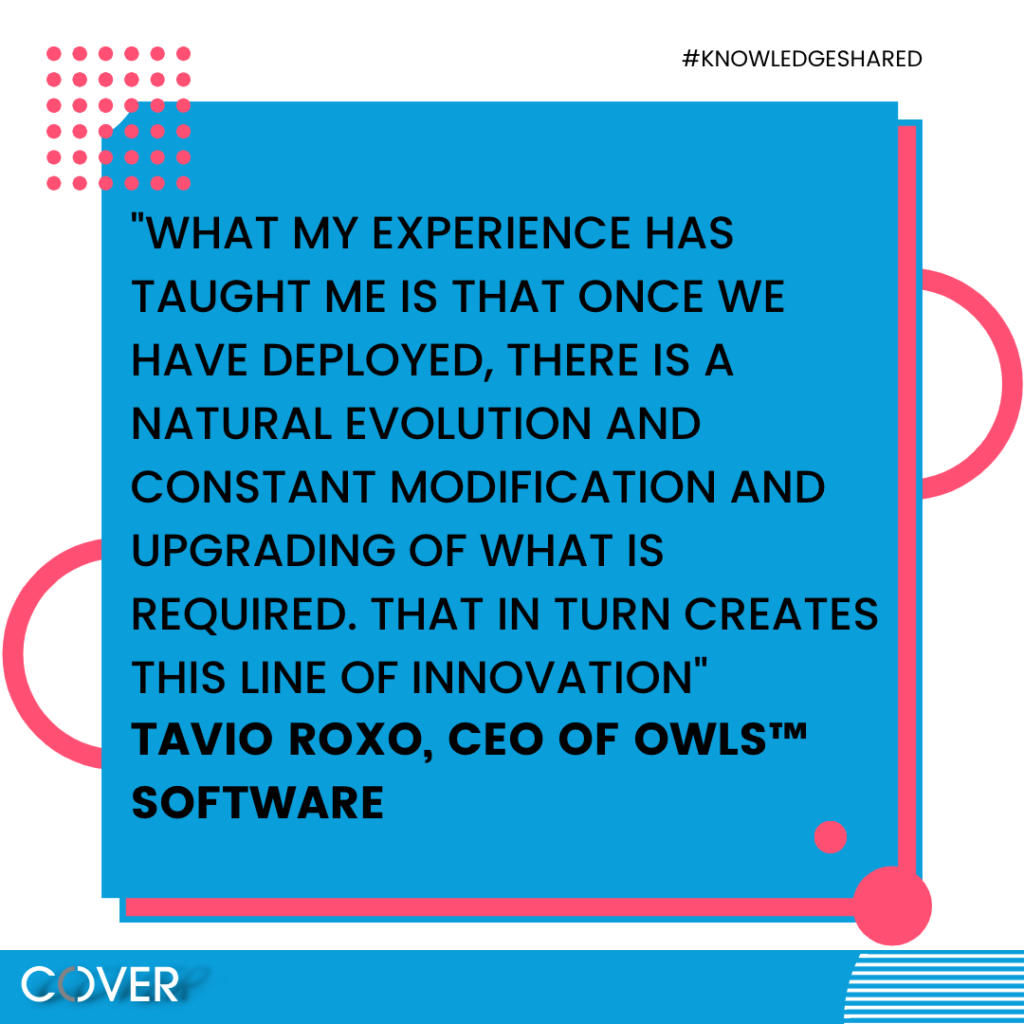Tavio Roxo, CEO of OWLSTM software is talking to us about starting out and setting up your digital journey.
Tony: One of the ideas that we spoke about previously is how do you create a burning platform in this environment. What would the motivation be to go digital?

Tavio: My experience is that a burning platform will always develop, whether it is intentional or unintentional. So, whether the burning platform is a result of operational inefficiencies, which are causing great difficulty within a business, or whether it is a decision made by the exco, by the board, or by the shareholders saying that the current model and structure is just not working. It could be operational reasons as there are many attributes and aspects which people must consider, ultimately deciding to change a core platform within their business. The burning platform is something that always forces the jump, as it were because it is an uncomfortable jump.
Change is a difficult item for employees to deal with in a business and technical change comes with its own difficulties when you do it. So, people are reluctant to do it and need motivation.
Tony: Now you have created the burning platform and you set the vision; How do you get the staff on the bus? How do you get them to buy in? What is needed for them to see the picture?
Tavio: It will make their life easier, as simple as that. For example, a claims clerk receives an email, and she must physically retype everything into the system. By eliminating that little work packet for her, she is immediately happier with the system. That makes her life easier. If you have someone who is doing a cash allocation that takes eight minutes to do, and you reduce that down to one minute because all the information’s prepopulated, that person is happy. Then the exco, if they can get their report by clicking a button or checking a dashboard, that makes them happy.

OWLS™ Insurance Software
Proud providers to insurance companies, UMA’s,
administrators, intermediaries and financial services companies.
So, these are the items which, all totalled up together, would help get the staff on the bus. Once again, change is difficult.
Tony: Now, once you have gotten there and you have implemented, people get used to what they have and the efficiency, how do you keep the momentum of change, to make it a continuous process of innovation and evolution?
Tavio: What my experience has taught me is that once we have deployed, there is a natural evolution and constant modification and upgrading of what is required. That in turn creates this line of innovation. I use the following example sometimes: If I offer you the functionality that, every time you walk in and out of your house, an SMS will be sent to your wife. You say, wow I did not need that functionality, but now that I have it, that is cool. Then the follow-up question from you would be: If the SMS could send a photo as well. I say, yes you can send a photo. So now you have evolved already, and your requirements have evolved.
But now if you can do a photo, can you send a quick five second video clip of the local weather, so that I can notify my family what the weather is like at home? And so, it moves from the point where you did not even need an SMS to the point where you are sending out a weather description. Basic example, but just to illustrate the fact that there is a constant evolution once you have deployed a system in your business that is working to make your life more efficient.

Tony: From your perspective and that of the client, it is important for you to measure the success of that deployment and the value brought by the new technology. How do you do that?
Tavio: For our clients, a commercial rationale is usually the one which is utilized. Which is, a CapEx, license fee and cost of the software versus the amount of business that you did pre-software and post-software and the amount of efficiency that you might have realized in terms of various operational elements in your business. But, for everyone, when they are looking at a software and they are trying to establish whether it was a successful software deployment or not, would be to ask whether it has reduced our pain points or whether it has increased our pain points?
The difficulty with that course is that for the first while, after you go live, you do have difficulties, so you must take a sort of three- or four-year view. But if you do and you wake up some time later and something which used to take you three days to complete at the end of every month is now a report that takes a few minutes, that is a massive efficiency.
That is a reduction of pain points, which will make someone very happy.

